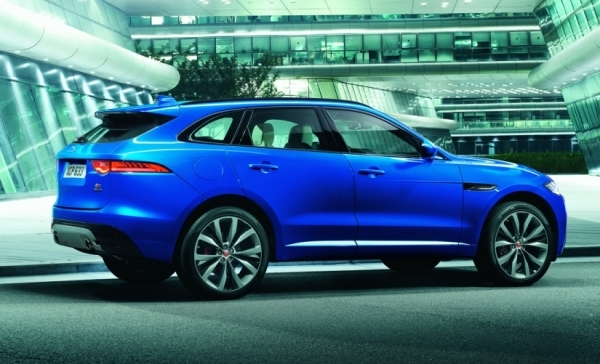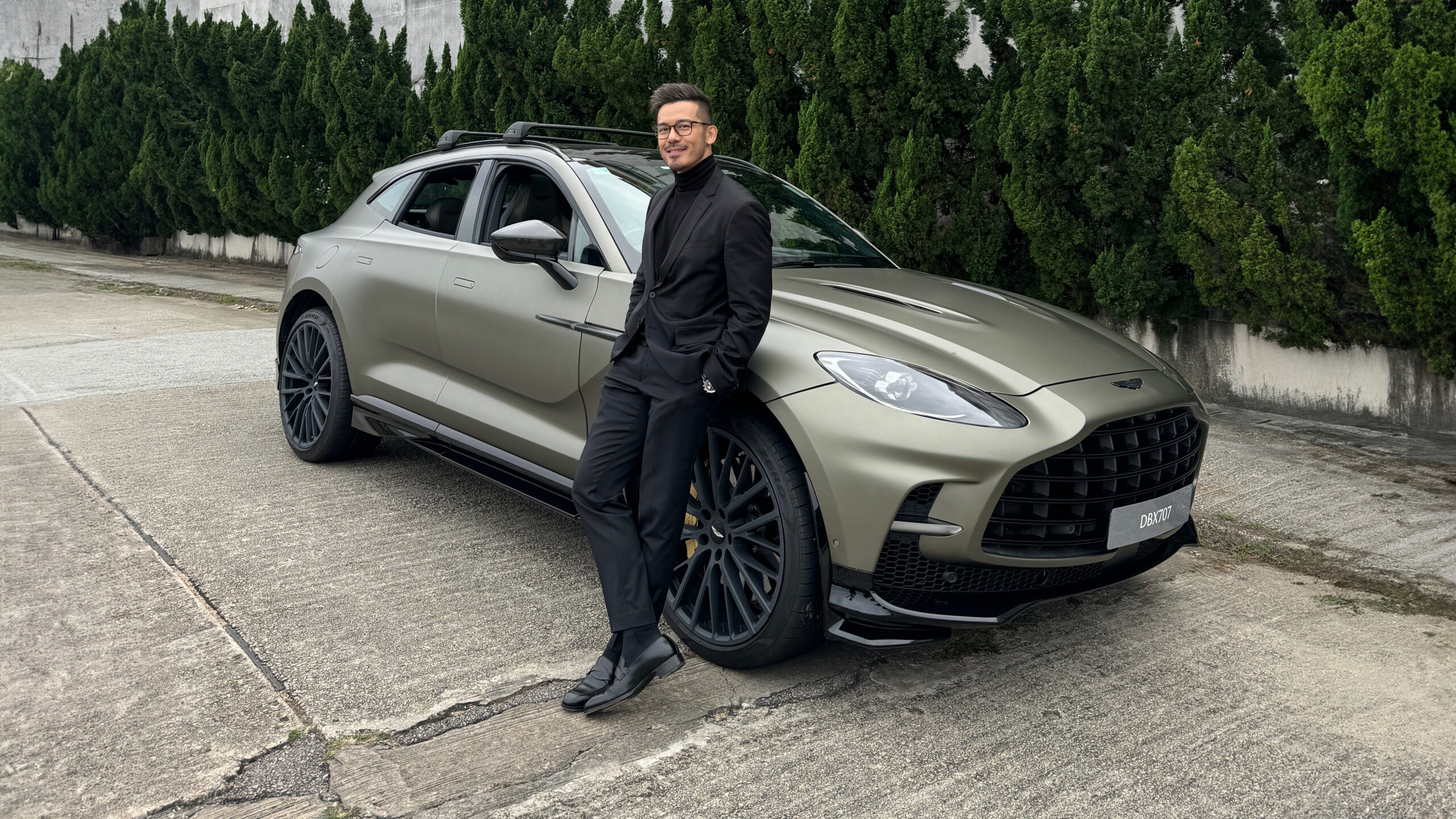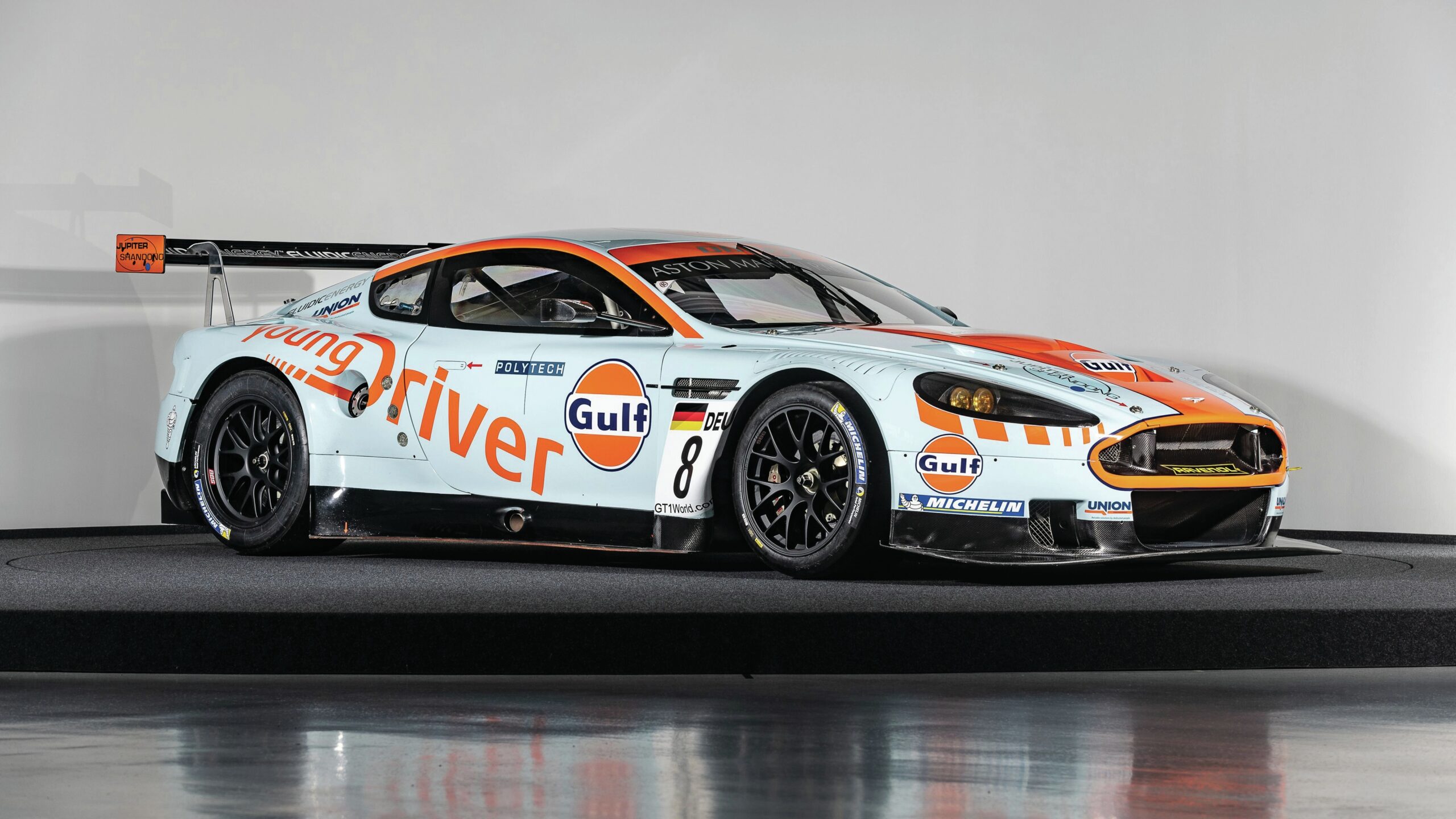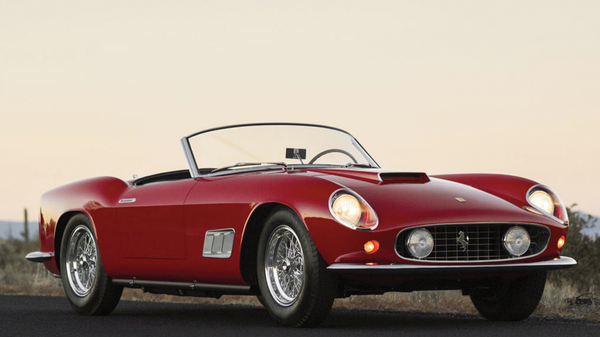
Jaguaren’t

Modern life is full of compromises. Conventions to which you must conform in order to be accepted as a fully fledged citizen of the 21st century, no matter how irritating they may be. From society’s expectations of round-the-clock response to electronic communications, to the meaningless biz-speak buzz-word jargon du jour, it is incumbent to participate or find yourself cast to the margins of the modern-day world.
It is not hard to get the feeling that the designers at Jaguar nurse a very similar sentiment towards sports utility vehicles, a somewhat embarrassingly popular niche. The category norms of hulking size and brutish form are the very antitheses of a marque with, arguably, the most elegant family album of all. Despite their tardiness in delivering a grand four-by-four, move with the times they clearly must. As evidenced – sorry – proven by the new Jaguar F-Pace.
Jag’s sloth in releasing an SUV, of course, could also be attributed to all those other logos that appear on the corporate coffee cups. As a group, Jaguar-Land Rover is already responsible for more than its fair share of 4x4s, both in terms of farmer-favourited Land Rovers and footballer-favourited Range Rovers.
The least engineering-intensive approach to creating a Jaguar SUV, of course, would be to simply affix a snarling pussy cat badge to the front of one of these well-established vehicles. This particular flavour of brand butchering, however, is likely to do nobody much good, at best cannibalising sales from one corporate column on the sales ledger to the next. A different approach, then, was clearly called for. Rather than borrowing oily bits from Land Rovers, the new F-Pace instead shares much of its under-the-skin architecture with the XE and XF, Jaguar’s small-to-medium size saloon cars.
As with its four-door siblings, the F-Pace includes a lot of weight-saving aluminium in place of all that hefty steel. It also features the odd bit of exotic magnesium, largely in a bid to minimise mass towards the higher reaches of the car and lower the centre of gravity as much as possible.
Steel does, however, make an appearance in the rear cargo space floor. While this is partly for strength, it also helps to balance mass across the axles in as near to a 50/50 fashion as possible.
All this weight saving and balancing is something of a clue to just the kind of car the F-Pace is intended to be – a fast road car, rather than a rugged off-roader.
Its fast road proficency is given something of a boost with the inclusion of Jaguar’s 3.0 litre supercharged V6 petrol engine, at least on the sportier R edition. Churning out 375 horses at a fizzing 6,500 rpm, with 332 lb-ft of torque at 4,500, is enough to push the F-Pace to 60 mph in a genuinely fast 5.1 seconds.
More accurately, that should be push and pull given that the eight-speed ZF gearbox distributes force across both the front and rear axles. Again, instead of swiping some all-wheel-drive wizardry from Land Rover, Jaguar’s own system makes a somewhat unwelcome reappearance in the F-Pace, in particular, the incarnation last seen in out-and-out sports car F-Type.
As a performance – rather than an off-road-focused all-wheel drive system – most of the power is typically directed to the rear wheels, aiding acceleration out of tarmac-clad bends, rather than mud-soaked fields. When conditions are slippery, however, up to 50 percent of the torque can find its way onto the road through the front wheels.
Many SUVs post impressive acceleration times, largely thanks to their ability to harness the sheer brute force of their oversized engines and signature all-wheel drive systems. Where many fall down – quite literally – is when it comes to cornering, with their big-weight-high-up-on-soft-springs combo toppling over as the lateral load increases.

The F-Pace lives up to its suffix though, nicely negotiating the twisty bits. Initial turn in to a corner is near instant, with steering wheel movement translating nearly instantly to a shift in direction. As the cornering load increases, the Jag settles into the business of generating sideways forces, something it does both reasonably quickly and smoothly. While there is some body roll, it’s by no means extreme, alarming or unpredictable. Unlike a number of other SUVs.
Pushed hard – up to and over the surprisingly high limit of its cornering grip – the F-Pace tends towards neutral handling, with both axles sliding at roughly the same time. Again, this is a refreshing change to the numbing wave of understeer offered by the majority of its competitors. All in all, that low centre of gravity and even axle load allows keen drivers to control the Jag rather as though it were a giant, slow-motion go kart. Carry on braking past the turn-in point and the back end will start to swing out in a languid tail slide. Apply power early mid-bend and the front end will scrub out, progressively widening the corner exit.
As well as the Jag’s intrinsic advantages of minimised, well-distributed weight, it also features the kind of torque-vectoring system more typically found only on supercars. This electronic traction policeman monitors grip and slip levels at each wheel, automatically squeezing individual brake discs as needed in order to maximise cornering performance.
It is, perhaps, the most sporting of any sports utility vehicle, producing a driving experience much more akin to the fast saloons and grand tourers with which Jaguar built its reputation. Genuinely enjoyable though the fast road driving is, the F-Pace is not without its niggles. Modern cars, in search of the eco-halo of reduced fuel consumption, tend to be fitted with frugal electromechanical power assisted steering – the big Jag being no exception. While precise and responsive, the steering lacks feel, robbing fingertips of the tiny sensations that reveal how close the front tyres really are to losing road traction.

Another minor frustration is the engine. Granted, it produces a great deal of power and a great lump of torque, but it needs an unfeasibly large number of revs to get going. Drivers accustomed to other SUVs, with their lazy, lusty, oversized engines, will find the constant gear-shuffling required to get the engine into its power band somewhat annoying. While the F-Pace is indeed a four-by-four, it’s by no means an off-roader. Its extra traction and higher ground clearance will make short work of well-kept fields and dirt tracks, but any attempt at deep mud, steep inclines or rocks bigger than a grapefruit will be followed by a red-faced call for a proper Land Rover. And a tow rope.
In truth, this level of off-road ablity will more than suffice for the way almost all drivers will use this car almost all of the time. Modern motorists want a car that looks like it can do the outdoors stuff, rather than one that actually need to get stuck in. Or indeed, get stuck.
Its target market is more likely to drive the F-Pace to the edge of the wilderness, then proceed on foot (or mountain bike/skis/surfboard/paraglider). Jaguar has recognised the faux ruggedness of its customers, providing an adventure-proof “Activity Key” wristband. After changing into your scuba gear, you can then lock everything in the boot, keys included. After a hard day’s shark wrestling, you can regain access by simply holding said wristband over the rear tailgate.
As a long distance cruiser to and from such adventures, the giant Jag has much to recommend it. Despite its sporty handling, it rides the bumps smoothly, soaking up road imperfections with ease. It’s quiet, too, with the raucous V6 settling down to an almost sub-audible purr when acceleration is no longer required.
The cabin is also a genuinely convivial place to sit, with the fortunate occupant reclining saloon-car style, rather than sitting bolt upright as is the SUV norm. As with other contemporary Jaguars, the F-Pace’s interior is simple and uncluttered, with knobs and buttons kept to a minimum. Aside from the altitude, there’s little in the view from the driver’s pew to suggest that the F-Pace is anything other than normal luxury saloon. The windscreen is long and shallow, the door cards are high and the transmission tunnel is chunky. You sit amid the F-Pace, rather than upon it.

A particular pleasure to use is its large central ‘infotainment’ screen. Touch sensitive, its gesture-activated operation should prove easy and intuitive for any member of the iPad generation. In something of a welcome change, the back seats are large enough for two adults to ride in comfort. Despite the swoopy coupé roof line, there’s enough headroom for even the reasonably tall. Matters are even better behind the rear seats. At 650 litres, the rear cargo space is some 100 litres larger than a BMW X3 or an Audi Q5. With the rear backrests folding down in a 40/20/40 combination, large items of oddly shaped furniture or sporting equipment would be no problem to transport.
Any car, of course, is a compromise between a multitude of competing wants and needs. As a halfway house between the prevailing automotive fashion for oversized off-road wannabes and Jaguar’s fast road heritage, the F-Pace admittedly excels.
Hard core performance drivers are never likely to buy one, in just the same way that hard core off-road drivers will be similarly averse. Both extremes, however, represent tiny market segments. It’s fast enough and easy enough to drive fast for almost every would-be purchaser, while having just enough off-road ability to spare you embarrassment.
Jaguar’s SUV may have been a long time coming, but it seems likely to have a similarly long road ahead.
Jaguar F-Pace R
Engine: 3.0 litre supercharged V6
Power: 375 bhp @ 6,500 rpm
Torque: 332 lb-ft @ 4,500 rpm
Transmission: 8-speed ZF semi automatic through four-wheel drive 0-62mph: 5.1s
Top speed: 155 mph (limited)
Price: from £52,000 (HK$530,000)
Above: The cabin is also a genuinely convivial place to sit.







